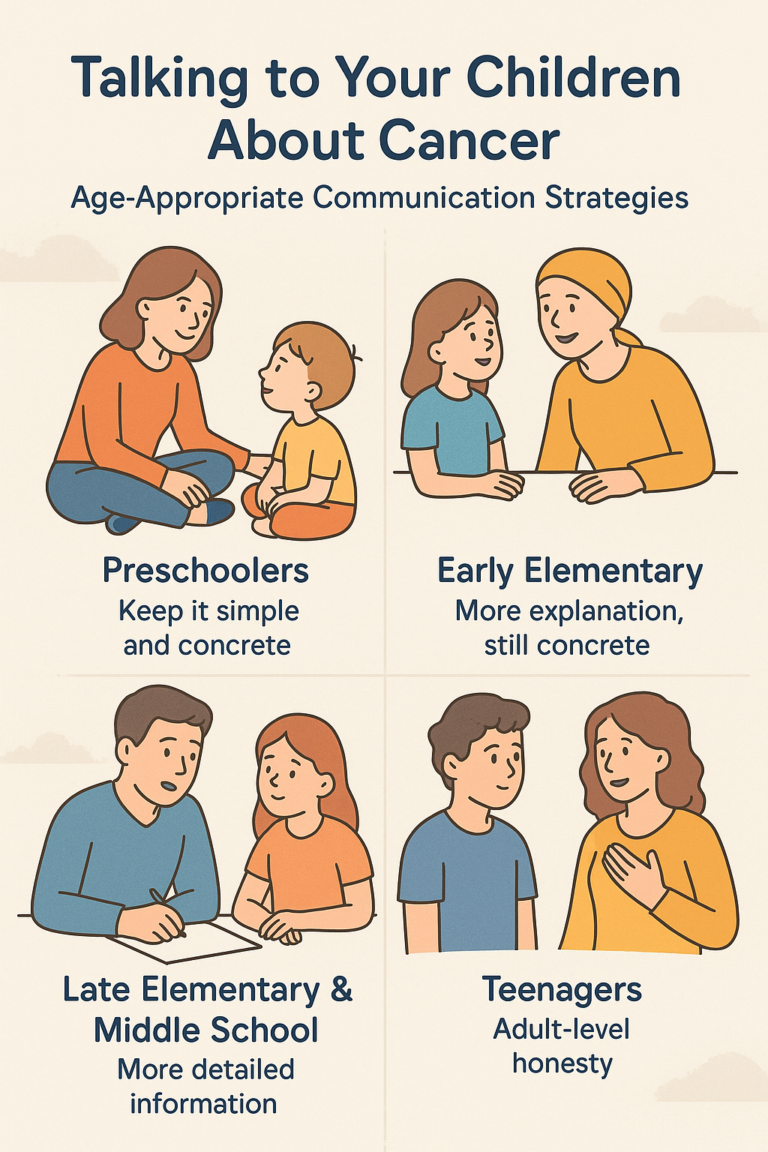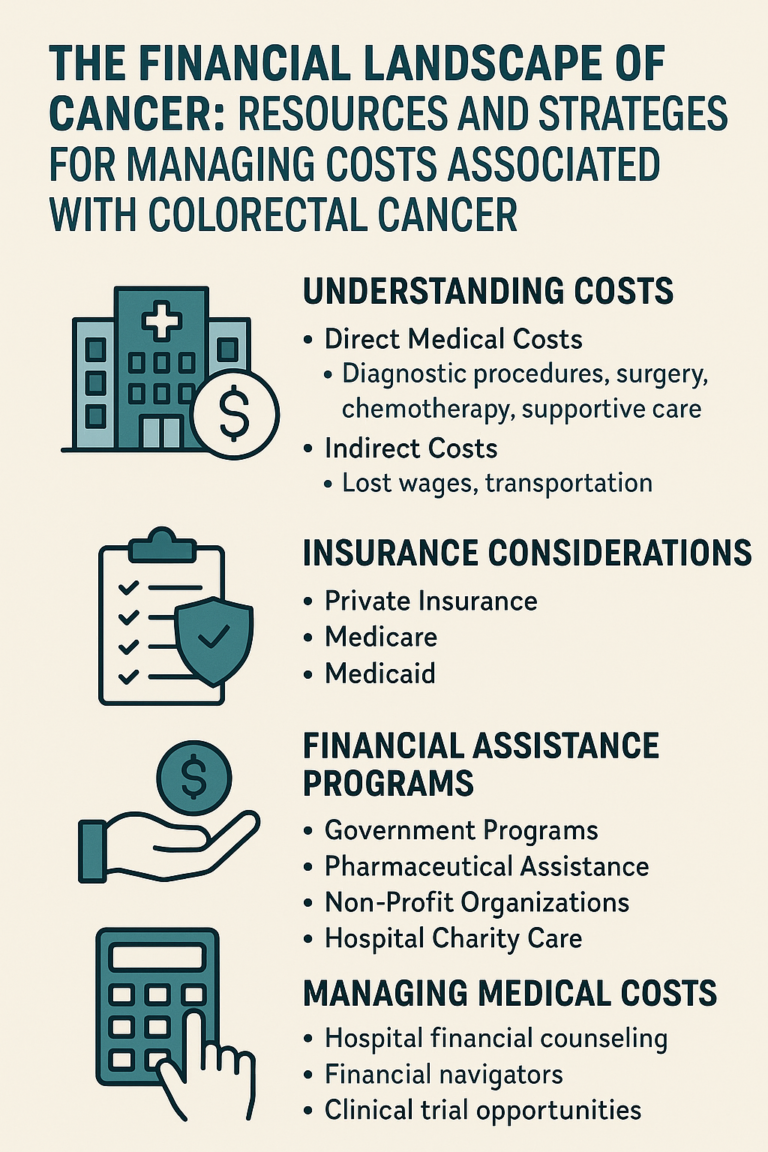Book Appointment Now
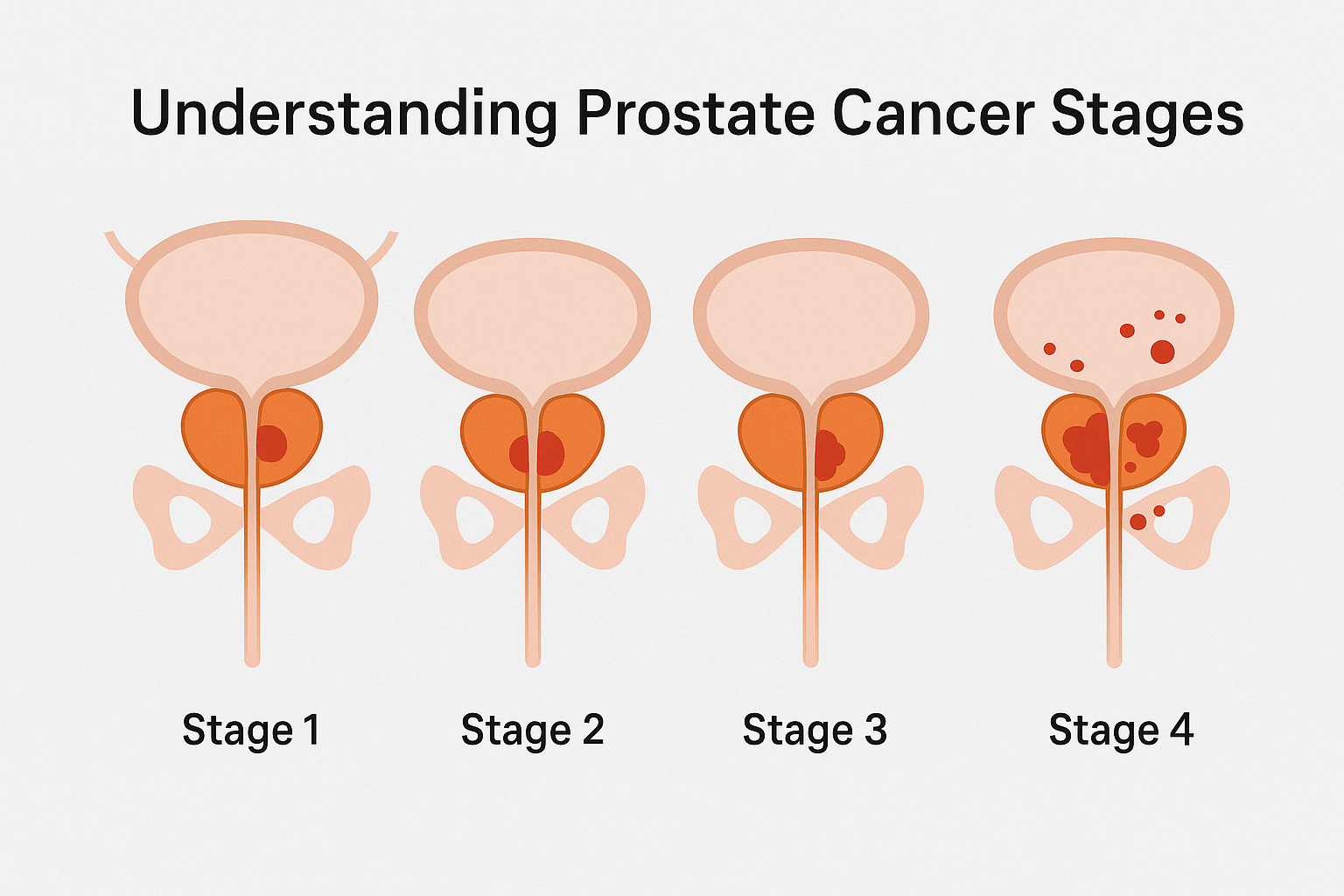
Understanding Prostate Cancer Stages and What They Mean
Introduction
When a man is diagnosed with prostate cancer, one of the first things his doctor will determine is the stage of the disease. The stage of prostate cancer describes how advanced the cancer is, whether it has spread beyond the prostate, and what treatment options might be best. Understanding prostate cancer staging is crucial for making informed decisions about treatment and prognosis. In this article, we’ll break down how prostate cancer is staged, what each stage means, and how it impacts treatment choices.
How Prostate Cancer is Staged
Doctors use several systems to stage prostate cancer, but the most common is the TNM system, which evaluates:
T (Tumor) – The size and extent of the tumor in the prostate.
N (Nodes) – Whether the cancer has spread to nearby lymph nodes.
M (Metastasis) – Whether the cancer has spread to distant organs like bones or the lungs.
Additionally, two other important factors help determine prognosis:
Gleason Score – Measures how aggressive the cancer cells look under a microscope.
PSA Level – A blood test that helps estimate cancer growth and spread.
Now, let’s break down what each stage of prostate cancer means.

Stage 1: Localized, Low-Risk Cancer
What It Means:
The cancer is small and confined entirely to the prostate. It can’t be felt during a digital rectal exam (DRE).
PSA level is low (<10 ng/mL), and the Gleason score is 6 or lower.
Often detected during a routine PSA test or biopsy for another condition.
Treatment Options:
Active Surveillance – Since Stage 1 cancer grows slowly, many men opt for watchful waiting rather than immediate treatment.
Radiation Therapy – Some men choose external beam radiation or brachytherapy (internal radiation).
Surgery (Radical Prostatectomy) – In younger, healthy men who want to eliminate the cancer.
There is a very high survival rate – Nearly 100% of men with Stage 1 prostate cancer live at least 5 years after diagnosis.
Stage 2: Localized, Intermediate-Risk Cancer
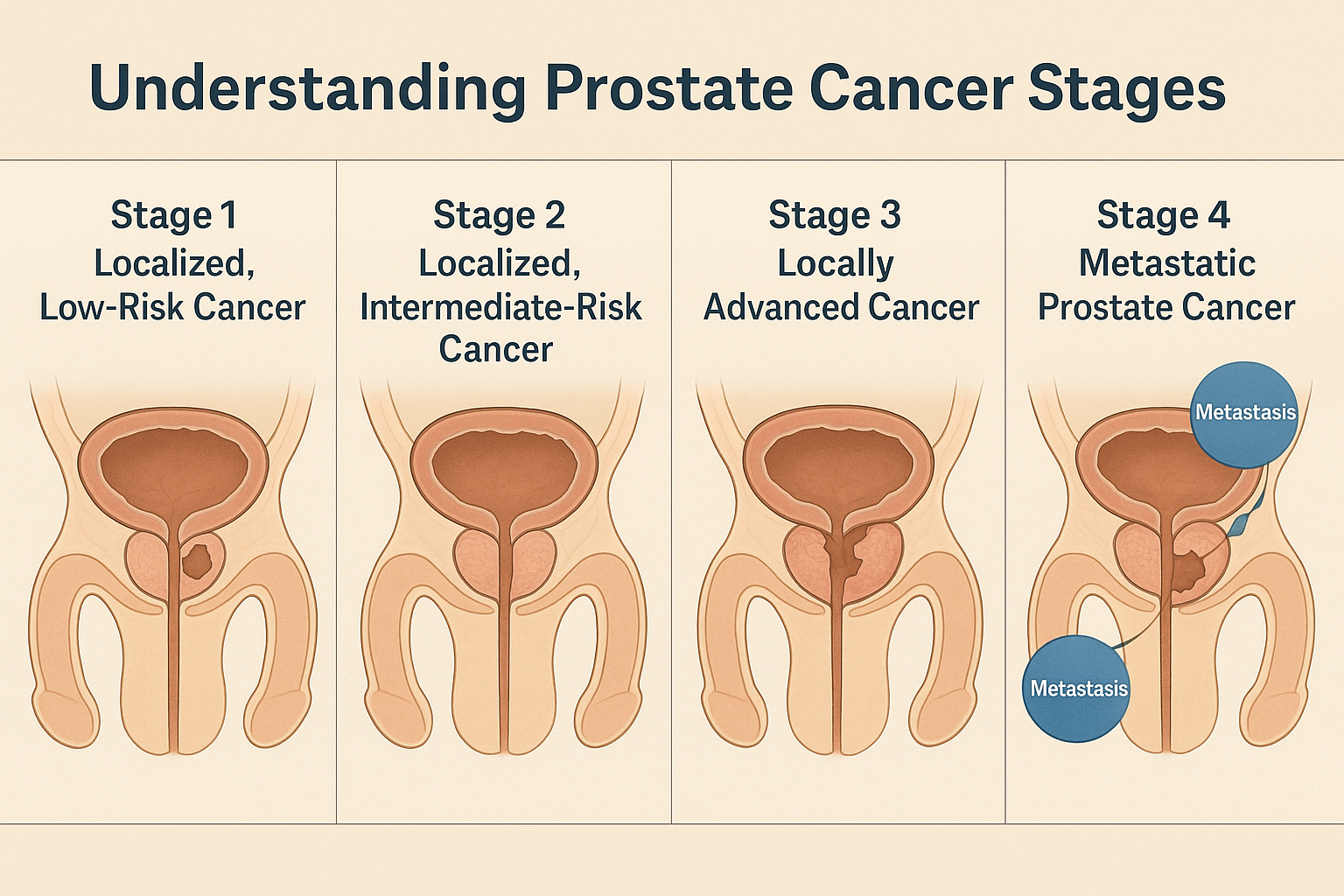
Genetic testing isn’t necessary for everyone, but certain men should strongly consider it, including those What It Means:
The cancer is still confined to the prostate, but is larger than Stage 1.
May be felt during a DRE, but has not spread outside the prostate.
PSA level is between 10–20 ng/mL.
Gleason score is 6 or 7, indicating a slightly more aggressive tumor.
Treatment Options:
Radiation Therapy (IMRT or Brachytherapy) – Used alone or with hormone therapy.
Radical Prostatectomy – Surgical removal of the prostate may be recommended.
Hormone Therapy (ADT) – Sometimes combined with radiation to reduce cancer growth.
Prognosis:
It also has a very high survival rate – Over 95% of men with Stage 2 prostate cancer live at least 10 years post-diagnosis.
Stage 3: Locally Advanced Cancer
What It Means:
The cancer has spread beyond the prostate to nearby tissues but has not reached distant organs.
May involve the seminal vesicles (glands near the prostate).
PSA level is often above 20 ng/mL.
Gleason score is 7 or higher, suggesting more aggressive cancer.
Treatment Options:
Radiation Therapy + Hormone Therapy – The most common approach for controlling cancer.
Radical Prostatectomy – May be an option if the tumor is still operable.
Androgen Deprivation Therapy (ADT) – Reduces testosterone levels to slow cancer growth.
Prognosis:
It still has high survival rates – Over 80% of men with Stage 3 prostate cancer survive at least 10 years with proper treatment.
Stage 4: Metastatic Prostate Cancer
What It Means:
The cancer has spread beyond the prostate to distant lymph nodes, bones, liver, or lungs.
PSA levels are usually very high (>50 ng/mL or more).
Gleason score is often 8–10, meaning highly aggressive cancer.
Common symptoms may include bone pain, weight loss, fatigue, and difficulty urinating.
Treatment Options:
- Hormone Therapy (Androgen Deprivation Therapy – ADT) – Slows cancer growth by reducing testosterone.
- Chemotherapy (Docetaxel, Cabazitaxel) – Used when cancer is resistant to hormone therapy.
- Radiopharmaceuticals (Pluvicto, Radium-223) – Target cancer cells in the bones.
- Immunotherapy (Keytruda, Provenge) – May help boost the immune system in some cases.
- Clinical Trials & Targeted Therapy (PARP Inhibitors, PSMA Therapy) – Newer treatments for men with specific genetic mutations (like BRCA).
While Stage 4 prostate cancer is not curable, treatments can significantly extend life and improve quality of life. Many men live 5–10 years with advanced therapies.
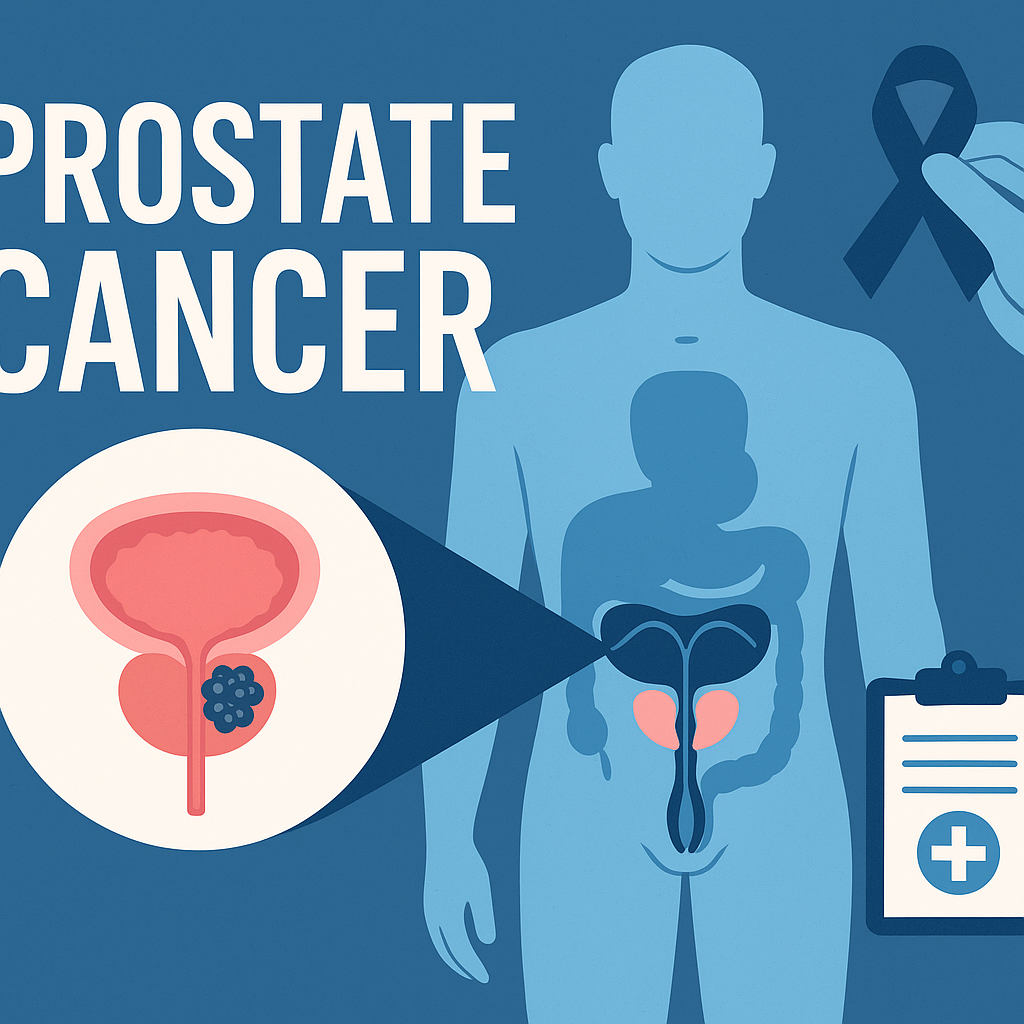
Understanding Gleason Score and PSA Levels
Besides staging, doctors also use Gleason scores and PSA levels to predict how aggressive prostate cancer might be.
Gleason Score (Grading the Cancer’s Aggressiveness)
The Gleason Score ranges from 6 to 10, with:
6 (Low Risk): Slow-growing cancer, often safe for active surveillance.
7 (Intermediate Risk): More aggressive, requires treatment.
8–10 (High Risk): Very aggressive cancer, needs immediate treatment.
PSA Levels (Measuring Cancer Activity)
- Below 4 ng/mL: Normal range (but prostate cancer can still be present).
- 4–10 ng/mL: Borderline – may need a biopsy.
- 10+ ng/mL: Higher risk – further testing required.
- 20+ ng/mL: Suggests locally advanced or metastatic cancer.
What Staging Means for Treatment Choices
The stage of prostate cancer plays a huge role in choosing the best treatment:
- Stage 1 & 2 (Localized): Active surveillance, surgery, or radiation.
- Stage 3 (Locally Advanced): Radiation + hormone therapy or surgery.
- Stage 4 (Metastatic): Hormone therapy, chemotherapy, and targeted treatments.
Conclusion
Knowing the stage of prostate cancer is critical for making the best treatment decisions.
- Early-stage cancer (Stage 1–2) is highly treatable, and many men can avoid aggressive treatments.
- Stage 3 requires active treatment, often a combination of radiation and hormone therapy.
- Stage 4 cancer is not curable, but new treatments like targeted therapy and radiopharmaceuticals can extend life and improve quality of life. A personalized treatment plan based on staging, PSA levels, and genetic testing offers the best chance of long-term survival. If you or a loved one has been diagnosed with prostate cancer, discussing all available options with a specialist is the next step.



